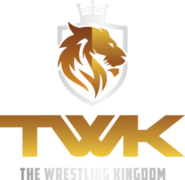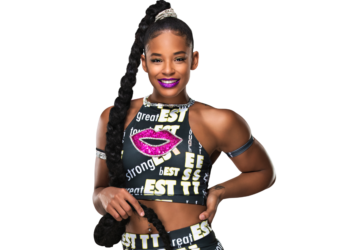Key Takeaways:
- Cody Rhodes weight lifting belt offers superior support and stability during heavy weightlifting.
- It is designed with high-quality materials to ensure durability and long-lasting use.
- The belt is fully adjustable, allowing for a comfortable and secure fit for different body types.
- Its sleek design and branding make it a stylish addition to any fitness wardrobe.
Are you looking to take your weight lifting game to the next level? Look no further than Cody Rhodes’ weight lifting belt.
Cody Rhodes, a renowned professional wrestler and weight training enthusiast, knows the importance of proper support and stability during intense workouts.
In this blog, we’ll explore why using a weight lifting belt is crucial, the benefits of Cody Rhodes’ belt, how to choose the right one, tips for proper usage, and the importance of maintaining and cleaning your belt. Get ready to unleash your strength and reach new heights with Cody Rhodes’ weight lifting belt!
| Parameters | Details |
|---|---|
| Material | Leather |
| Width | 4 inches |
| Size | Adjustable, fits waist size 28-44 inches |
| Buckle | Double prong |
| Color Options | Black, Brown |
| Support Level | Medium |
| Usage | Weightlifting, powerlifting, bodybuilding |
| Features | Thick padding, reinforced stitching, sturdy and durable |
The Importance of Weight Lifting Belts
Weight lifting belts play a vital role in enhancing your strength and stability during weightlifting exercises.
Why Should You Use a Weight Lifting Belt?
A weight lifting belt can provide added support and stability during heavy lifting exercises. It helps to maintain proper form and protect your lower back from potential injuries.
By wearing a weight lifting belt, you can increase intra-abdominal pressure and reduce stress on your spine.
Additionally, it can help you feel more confident and secure during your workouts. Remember, a weight lifting belt should be used in conjunction with proper technique and a well-rounded training program for optimal results.
The Benefits of Using a Weight Lifting Belt
Using a weight lifting belt can offer several benefits:
- Improved stability and support for your lower back, reducing the risk of injuries during heavy lifts.
- Increased intra-abdominal pressure, which helps to stabilize the core and protect the spine.
- Enhanced lifting performance by allowing you to lift heavier weights and maintain proper form.
- Prevention of excessive arching or rounding of the back, promoting better spinal alignment.
- A boost in confidence and mental focus, knowing you have additional support during your workouts.
Understanding Cody Rhodes Weight Lifting Belt
Cody Rhodes Weight Lifting Belt: Get insights into why Cody Rhodes used a weight lifting belt and understand its key features.
Who is Cody Rhodes?
Cody Rhodes is a professional wrestler and actor. He comes from a wrestling family, with his father being the famous Dusty Rhodes.
Cody has had great success in the wrestling industry, competing in promotions like WWE and AEW.
He is known for his athleticism, charisma, and in-ring skills. In addition to wrestling, Cody has also appeared in movies and TV shows.
He is a well-respected figure in the world of professional wrestling and continues to entertain fans with his performances.
Why Did Cody Rhodes Use a Weight Lifting Belt?
Cody Rhodes used a weight lifting belt for added support and stability during heavy lifts.
The belt helps to brace the core and lower back, reducing the risk of injuries and allowing him to lift heavier weights safely.
It also provides a psychological boost, giving him confidence and a sense of security while lifting.
Ultimately, the weight lifting belt is a valuable tool for maintaining proper form and maximizing performance in the gym.
Key Features of Cody Rhodes Weight Lifting Belt
The key features of Cody Rhodes weight lifting belt include:
- Premium Materials: This belt is made from high-quality materials like leather or nylon, ensuring durability and longevity.
- Adjustable Design: It comes with a customizable fit, allowing you to adjust the tightness according to your preference and body size.
- Enhanced Support: The belt provides excellent lumbar support, minimizing the risk of injuries and improving your overall lifting form.
- Secure Closure: With a secure buckle or velcro system, the belt stays firmly in place during your workouts, preventing any unnecessary movement.
- Comfortable Fit: Designed with your comfort in mind, the belt offers a snug fit without compromising flexibility, allowing you to move freely during exercises.
- Versatile Use: Whether you’re into powerlifting, weightlifting, or general strength training, this belt is suitable for a variety of workouts.
- Stylish Design: Cody Rhodes weight lifting belt often features a sleek and stylish design, making you stand out in the gym while you lift with confidence.
Remember, when choosing a weight lifting belt, it’s crucial to find one that fits your body and lifting needs. Always consult with a professional if you’re unsure about the right fit or usage.
How to Choose the Right Weight Lifting Belt
Choosing the right weight lifting belt is essential for proper support and safety during your workouts. Consider these factors to find the perfect fit for you.
Types of Weight Lifting Belts
Weight lifting belts come in different types to cater to different needs and preferences. Here are some common types:
- Powerlifting Belts: These belts are wider in the back and taper towards the front, providing maximum support and stability during heavy lifts.
- Olympic Lifting Belts: These belts are narrower all around and allow for more flexibility and movement during dynamic lifts like snatches and clean and jerks.
- Velcro Belts: These belts are adjustable and secure around the waist using Velcro straps. They are lightweight and easy to put on and take off, making them suitable for lighter workouts or cross-training.
- Leather Belts: These belts are made from sturdy leather material and offer excellent durability and support. They are commonly used for powerlifting and heavy strength training.
- Nylon Belts: These belts are lightweight and flexible, making them ideal for functional fitness and activities that require a wider range of motion.
Remember to choose a weight lifting belt that fits comfortably and provides the right level of support for your specific training goals and needs.
Factors to Consider When Choosing a Weight Lifting Belt
When choosing a weight lifting belt, there are a few factors you should consider.
Firstly, think about the material of the belt.
Leather and nylon are popular choices, each with its own advantages.
Secondly, consider the width of the belt.
A wider belt provides more support, but it may restrict your range of motion.
Thirdly, pay attention to the buckle type.
Some belts have quick-release buckles, while others use a prong or lever.
Lastly, make sure to choose a belt that fits your waist size properly.
Tips for Properly Using a Weight Lifting Belt
Using a weight lifting belt correctly can help support your lower back and improve your lifting technique.
Here are some tips to ensure you use it properly.
When Should You Use a Weight Lifting Belt?
You should use a weight lifting belt when you are performing heavy compound exercises like squats and deadlifts.
These exercises put a lot of pressure on your lower back and core, and a weight lifting belt can provide added support and stability.
It’s important to note that a weight lifting belt should not be relied upon as a substitute for proper form and technique.
It is only meant to supplement your training and should be used sparingly to avoid becoming dependent on it.
How to Wear a Weight Lifting Belt Correctly
To wear a weight lifting belt correctly, follow these steps:
- Position the belt around your waist, over your belly button, and make sure it is centered.
- Tighten the belt snugly, but not so tight that it restricts your breathing or movement.
- Pull your abdominal muscles in and engage your core before you lift.
- When lifting, focus on maintaining proper form and technique, using your core muscles to support your spine.
- Avoid relying solely on the belt for support and instead use it as a tool to enhance your stability.
- After you finish your set, loosen the belt or remove it completely to allow for proper blood circulation.
Common Mistakes to Avoid When Using a Weight Lifting Belt
One common mistake to avoid when using a weight lifting belt is wearing it too loosely. When the belt is not snugly secured around your waist, it won’t provide the necessary support and stability.
Another mistake is relying solely on the belt for core strength.
While the belt can assist in stabilizing your back, it’s important to also focus on strengthening your core muscles through exercises like planks and abdominal workouts. Lastly, it’s important to avoid using a weight lifting belt as a crutch.
Don’t rely solely on the belt to lift heavy weights; instead, gradually build your strength and technique to avoid potential injuries.
Maintaining and Cleaning Your Weight Lifting Belt
To ensure the longevity of your weight lifting belt, regular maintenance and cleaning are essential.
Here’s how you can keep your belt in top-notch condition.
Importance of Proper Maintenance and Cleaning
Proper maintenance and cleaning of your weight lifting belt is essential for its longevity and effectiveness. Regularly cleaning your belt helps to remove sweat, dirt, and odor, keeping it fresh and hygienic.
It also prevents the buildup of bacteria and germs.
Proper maintenance, on the other hand, involves checking for any signs of wear and tear, such as fraying or loose stitching, and addressing them promptly. This ensures that your belt remains safe and supportive during your workouts.
Tips for Cleaning Different Types of Weight Lifting Belts
Cleaning your weight lifting belt is essential for maintaining its durability and hygiene. Here are some tips for cleaning different types of weight lifting belts:
- Leather Belts: Use a damp cloth with mild soap to wipe away sweat and dirt. Avoid soaking or machine washing, as it could damage the leather. Remember to let it air dry completely before using it again.
- Nylon Belts: These belts are more resistant to moisture and can be washed in a machine. Use a gentle cycle with cold water and mild detergent. Hang it to dry or use a low-heat setting in the dryer.
- Velcro Belts: Remove any loose dirt or debris from the Velcro straps. For spot cleaning, use a small brush or toothbrush with mild soap and water. Avoid submerging the Velcro in water, as it may affect its adhesive properties.
- Neoprene Belts: Neoprene belts can be hand washed with mild detergent and warm water. Gently scrub the belt with a soft cloth or sponge, focusing on the areas with accumulated dirt or sweat. Rinse thoroughly and air dry.
Remember to always check the manufacturer’s instructions for specific cleaning recommendations. Regularly cleaning your weight lifting belt will help extend its lifespan and keep it in good condition.
Frequently Asked Questions about Weight Lifting Belts
Do Weight Lifting Belts Prevent Injuries?
Weight lifting belts can help prevent injuries by providing support and stability to the lower back and core muscles during heavy lifts.
When worn correctly, they help to maintain proper form and alignment, reducing the risk of strains and other injuries.
However, it’s important to note that relying solely on a belt is not a substitute for proper technique and progressive training.
It’s crucial to prioritize developing strong core muscles and practicing good lifting form for maximum injury prevention.
Are Weight Lifting Belts Suitable for Everyone?
Weight lifting belts are not suitable for everyone.
While they can provide support and stability during heavy lifts, they are generally recommended for experienced lifters who are performing lifts that place a significant amount of stress on the spine, such as squats and deadlifts.
For beginners or those who do not lift with heavy weights, it is more important to focus on building a strong core and proper form.
Additionally, individuals with certain medical conditions or injuries should consult with a healthcare professional before using a weight lifting belt.
Can I Wear a Weight Lifting Belt for Every Exercise?
Yes, you can wear a weight lifting belt for every exercise if you feel it provides support and stability.
However, it is important to note that a weight lifting belt is not necessary for every exercise.
It is most commonly used for heavy compound exercises like squats, deadlifts, and overhead presses.
For other exercises that do not put as much stress on your lower back, it may be more beneficial to rely on proper form and technique rather than relying on a belt.
Ultimately, the decision to wear a weight lifting belt for every exercise is a personal one and depends on individual preferences and needs.
How Tight Should a Weight Lifting Belt be Worn?
When it comes to wearing a weight lifting belt, the key is to find the right balance.
You want the belt to be tight enough to provide support and stability, but not so tight that it restricts your movement or breathing.
Here’s what you need to know about how tight a weight lifting belt should be worn:
- Snug Fit: The belt should be snug around your waist, but not uncomfortably tight. You should be able to fit a finger or two between the belt and your body.
- Adjustable Fit: Most weight lifting belts have a buckle or Velcro closure that allows you to adjust the tightness. Start by placing the belt around your waist and tightening it to a comfortable level.
- Breathability: Make sure the belt allows you to breathe properly. It should not constrict your chest or put too much pressure on your diaphragm.
- Movement: The belt should not hinder your range of motion. You should be able to perform your exercises with proper form and without feeling restricted.
Remember, the primary purpose of a weight lifting belt is to provide support and stability during heavy lifts.
It should not be relied upon as a substitute for proper technique and training.
Final Verdict
Cody Rhodes, a professional wrestler and avid weight lifter, understands the importance of using a weight lifting belt.
He uses a high-quality belt to provide support and stability during his intense workouts.
The key features of Cody Rhodes’ weight lifting belt include durability, adjustable straps, and a secure buckle.
When choosing a weight lifting belt, consider the type that suits your needs and the factors that ensure a proper fit.
Remember to properly wear the belt, avoid common mistakes, and maintain and clean it regularly for longevity.
Weight lifting belts can be beneficial for preventing injuries and are suitable for most people, but they should be used appropriately and not for every exercise.
Most importantly, always ensure that the belt is worn tightly for effective support.

































